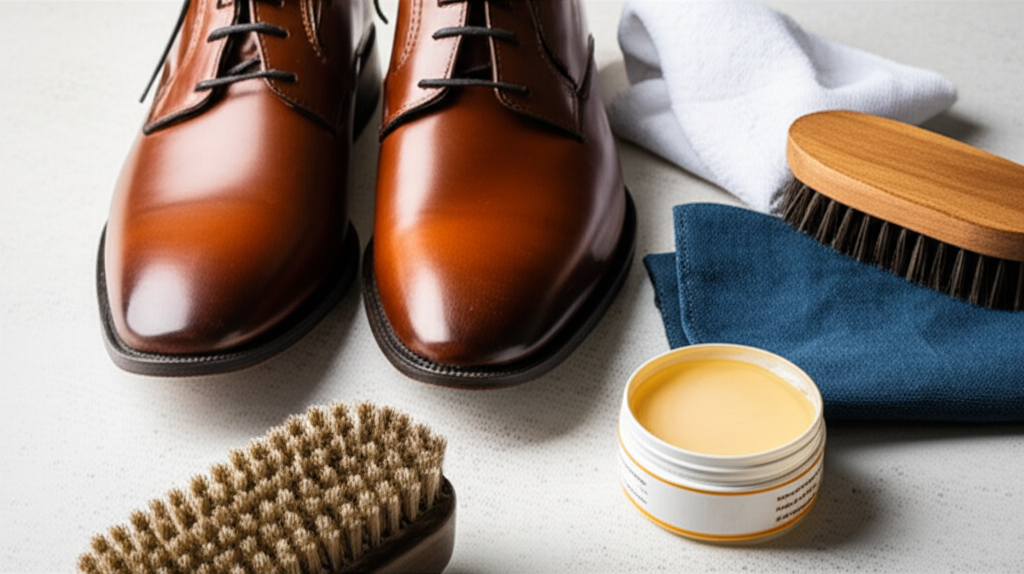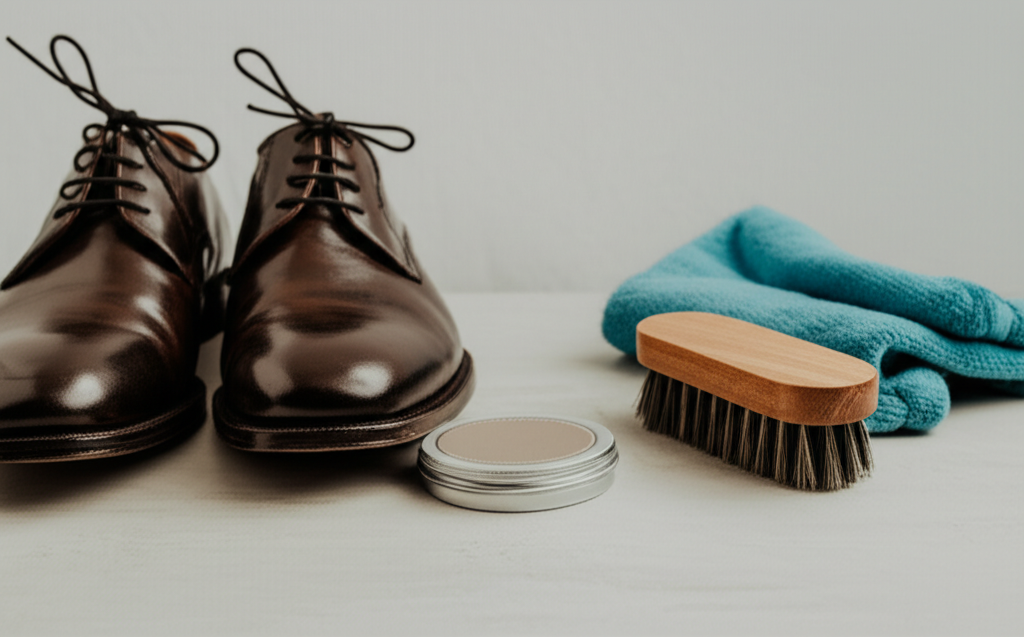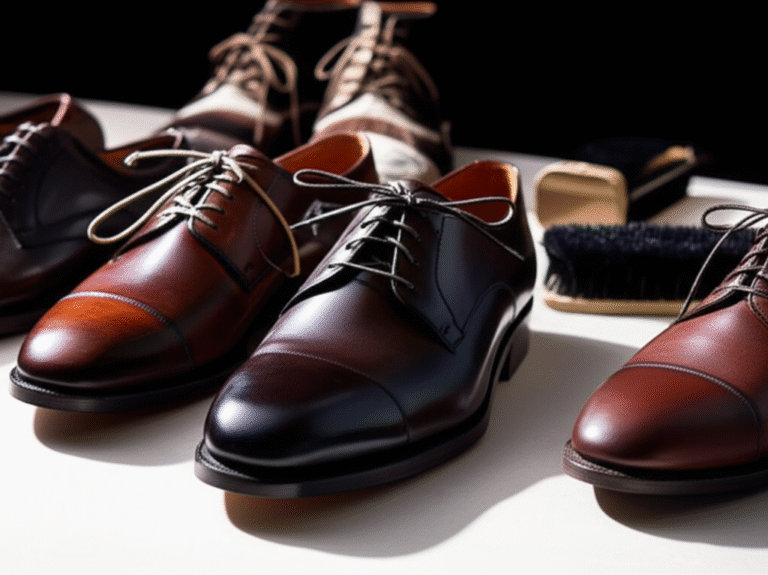What to Clean Leather Shoes With: The Ultimate Beginner’s Guide
For pristine leather shoes, simply use a soft cloth, mild soap or specialized leather cleaner, and water. Gently wipe away dirt, condition the leather, and polish for a lasting shine. This guide will show you exactly what to clean leather shoes with for a professional look at home.
Key Takeaways
- Gather essential leather shoe cleaning supplies.
- Remove surface dirt and debris first.
- Use the right cleaner for your leather type.
- Condition and protect your leather shoes.
- Polish and shine for a finished look.
Leather shoes are a fantastic investment. They look stylish and can last for years with proper care. But knowing what to clean leather shoes with can feel a bit daunting. You might worry about damaging the material or making things worse. Don’t let that stop you! Keeping your leather shoes looking their best is simpler than you think. With the right tools and a little know-how, you can easily tackle dirt, scuffs, and dullness. This guide will walk you through everything you need to know, step-by-step. Get ready to give your favorite leather footwear the attention they deserve.
Essential Leather Shoe Cleaning Supplies

Before you start cleaning, it’s important to have the right tools. Using the wrong products can actually harm your leather shoes. Think of it like using the wrong detergent on delicate clothes. You want to be gentle and effective. Here’s a list of what you’ll need to get your leather shoes sparkling:
What You’ll Need for Leather Shoe Cleaning:
- Soft Cloths: Microfiber cloths are ideal. You’ll need a few – one for cleaning, one for conditioning, and one for polishing.
- Soft Bristle Brush: A horsehair brush is excellent for dusting and applying polish.
- Leather Cleaner: Choose a cleaner specifically designed for leather. Avoid harsh chemicals or all-purpose cleaners.
- Leather Conditioner: This is crucial for keeping the leather supple and preventing cracks.
- Leather Polish/Cream: To restore color and shine. Match the color to your shoes.
- Water: For diluting cleaner and rinsing.
- Shoe Trees: To maintain the shoe’s shape while cleaning and drying. Cedar shoe trees are best as they absorb moisture and odor.
- Newspaper or Drop Cloth: To protect your work surface from dirt and polish.
Having these items ready will make the cleaning process smooth and efficient. You can find most of these at shoe repair shops, online retailers, or even some department stores. Investing in quality products will pay off in the long run for the health and appearance of your leather shoes.
Step-by-Step Guide: How to Clean Leather Shoes
Now that you have your supplies, let’s get down to cleaning. This process is designed for beginners and will help you achieve professional-looking results without much fuss. Remember to always work in a well-ventilated area.
Step 1: Prepare Your Workspace and Shoes
Start by laying down newspaper or a drop cloth on your work surface. This protects your table or floor from dirt and polish. Next, remove the shoelaces from your leather shoes. This allows you to clean thoroughly around the eyelets and tongue. If your shoes have removable insoles, take those out too. Insert shoe trees into your shoes. This helps them keep their shape and makes it easier to clean the uppers and soles.
Step 2: Remove Surface Dirt and Dust
Use a dry, soft cloth or a soft bristle brush to gently wipe away any loose dirt, dust, or debris from the entire surface of the shoes. Pay attention to the seams, creases, and the area where the sole meets the upper. This initial dusting step is important because it prevents you from rubbing grit into the leather during the wet cleaning phase, which could cause scratches.
Step 3: Gentle Cleaning with Leather Cleaner
This is where you tackle the actual grime. For most smooth leather shoes, a mild leather cleaner is the best option. Dampen a clean, soft cloth slightly with water. Apply a small amount of leather cleaner to the cloth. Gently wipe the surface of the shoe in a circular motion. Don’t saturate the leather with water or cleaner. For stubborn spots, you might need to apply a bit more pressure, but always be gentle. If you don’t have a dedicated leather cleaner, a very diluted solution of mild soap (like a pH-neutral castile soap) and water can be used as a last resort, but always test on an inconspicuous area first. A good leather cleaner is formulated to remove dirt without stripping the natural oils from the leather. You can learn more about leather care and cleaning from resources like the Leather Chemistry and Care guide from TFL, a leader in leather technology.
After cleaning, wipe away any excess cleaner with a slightly damp cloth. Then, use a dry cloth to gently buff the shoe. Allow the shoes to air dry completely. Never place them near a direct heat source like a radiator or in direct sunlight, as this can dry out and crack the leather.
Step 4: Condition the Leather
Once the shoes are completely dry, it’s time to condition them. Leather, like skin, needs moisture to stay soft and flexible. Without conditioning, it can become dry, brittle, and prone to cracking, especially in older shoes. Apply a small amount of leather conditioner to a clean, soft cloth. Gently rub it into the leather using circular motions, ensuring even coverage. Focus on areas that might be drier or show signs of wear. Conditioner helps to restore lost oils and protect the leather from future damage.
Let the conditioner soak in for about 10-15 minutes. Then, use another clean, dry cloth to buff away any excess conditioner. This will also help bring out a subtle sheen. The type of conditioner you use can depend on the leather finish. For example, some conditioners are designed for patent leather, while others are for distressed or full-grain leather.
Step 5: Polish and Shine
This step is all about restoring the color and adding a protective shine. Choose a leather polish or cream that matches the color of your shoes. If you have black shoes, use black polish. For brown shoes, use brown polish. If you can’t find an exact match, a neutral polish can also work to add shine without altering the color significantly.
Apply a small amount of polish to a clean cloth or a dauber brush. Work it into the leather in small, circular motions, covering the entire shoe. You can apply more polish for deeper color restoration or scuff coverage. Let the polish dry for a few minutes. Once dry, use a clean, soft cloth or a horsehair brush to buff the shoes vigorously. This buffing action brings out the shine and creates a smooth, polished finish. For an extra mirror-like shine, you can use a damp cloth to “water polish” the shoes after the initial buffing, then buff again.
Step 6: Protect and Re-lace
After polishing, you can apply a leather protector spray. This adds an extra layer of defense against water and stains. Follow the instructions on the product, usually involving spraying evenly from a distance and letting it dry. Finally, re-lace your shoes. You can use the original laces or new ones to give your refreshed shoes a brand-new look.
Your leather shoes should now look significantly better, feeling refreshed and protected. Regular cleaning and conditioning are key to keeping them in top condition for years to come.
Special Considerations for Different Leather Types

Not all leather is the same, and some types require slightly different care. Knowing the specific type of leather your shoes are made from will help you choose the best cleaning methods and products.
Smooth Leather
This is the most common type of leather found in dress shoes and boots. It has a consistent, non-textured surface. The steps outlined above are perfect for smooth leather. Use a leather cleaner, conditioner, and polish designed for smooth leather. Avoid abrasive cleaners or excessive water, as this can damage the finish.
Suede and Nubuck
Suede and nubuck are types of leather with a napped (fuzzy) finish. They are more delicate than smooth leather and require specialized cleaning methods. Never use water or cream-based products on suede or nubuck. Instead, use a suede brush or a suede eraser to remove dry dirt and stains. For tougher stains, a specialized suede cleaner is necessary. Always brush in one direction to maintain the nap.
Patent Leather
Patent leather has a shiny, plastic-like coating. It’s relatively easy to clean. Wipe it down with a damp cloth. For smudges or marks, a mild glass cleaner or a specialized patent leather cleaner can be used. Avoid harsh chemicals or abrasive materials, which can scratch the coating. A bit of petroleum jelly or a specialized patent leather conditioner can help restore shine.
Exotic Leathers (e.g., Snake, Crocodile)
These leathers are often more delicate and may have a distinct scale pattern. Cleaning should be done with a very gentle touch. Use a cleaner specifically formulated for exotic leathers. A damp cloth can be used for light cleaning, but avoid soaking the material. Conditioning might be needed, but use products designed for the specific type of exotic skin.
Understanding your leather type ensures you’re using the right products and techniques, preventing damage and keeping your shoes looking their best.
Common Leather Shoe Problems and Solutions
Even with the best care, your leather shoes might encounter some common issues. Here’s how to deal with them:
Scuffs and Scratches
Solution: For minor scuffs on smooth leather, the leather polish you use for the final step often does the trick. Apply a bit more polish to the affected area and buff well. For deeper scratches, you might need a leather repair kit or a colored leather cream that can fill in the scratch. Suede and nubuck can often be repaired by gently brushing with a suede brush or using a suede eraser.
Water Stains
Solution: If your leather shoes get wet, wipe them down immediately with a dry cloth. Stuff them with newspaper or shoe trees and let them air dry naturally, away from heat. Once dry, apply a leather conditioner to restore moisture. For tough water stains, you might need a specialized leather cleaner. For suede, let it dry completely, then use a suede brush to restore the nap.
Salt Stains (Winter)
Solution: Salt stains are common in winter. Mix equal parts white vinegar and water. Dampen a cloth with the solution and gently wipe away the salt residue. Wipe again with a clean, damp cloth to remove the vinegar solution. Let the shoes air dry, then condition them. Specialized leather cleaners for salt stains are also available.
Odor
Solution: The best way to combat shoe odor is prevention. Use cedar shoe trees to absorb moisture and odor. Air out your shoes after wearing them. For existing odors, you can sprinkle baking soda inside the shoes overnight, then vacuum it out. Tea bags or activated charcoal inserts can also help absorb smells.
Cracked Leather
Solution: Cracked leather is usually a sign of dryness. The best prevention is regular conditioning. If cracks have already formed, clean the shoes thoroughly and apply a good quality leather conditioner. For deeper cracks, a leather filler or repair product might be necessary, followed by polish to match the color.
Table: Cleaning Leather Shoes vs. Other Materials
It’s important to know that cleaning different shoe materials requires different approaches. Here’s a quick comparison to highlight why specialized leather care is important:
| Material | Best Cleaning Method | Products to Avoid | Key Considerations |
|---|---|---|---|
| Smooth Leather | Mild soap/leather cleaner, conditioner, polish, soft cloths. | Harsh chemicals, excessive water, abrasive scrubbers. | Maintain moisture with conditioner. Buff for shine. |
| Suede/Nubuck | Suede brush, suede eraser, specialized suede cleaner. | Water, soap, leather creams, oils. | Brush to maintain nap. Protect with spray. |
| Canvas/Mesh (Sneakers) | Mild soap and water, shoe cleaning brushes, magic eraser for soles. | Bleach (can yellow), harsh chemicals. | Air dry. Be gentle on printed logos. |
| Patent Leather | Damp cloth, glass cleaner, specialized patent cleaner. | Abrasive cleaners, alcohol-based products. | Wipe to remove smudges. Polish to restore shine. |
This table shows that while some materials might tolerate water and soap, leather, especially suede and nubuck, requires a much gentler and specific approach to avoid damage.
Pro Tips for Maintaining Leather Shoes
- Rotate Your Shoes: Don’t wear the same pair of leather shoes every day. Giving them a day off allows them to dry out completely and recover their shape, extending their lifespan.
- Use Shoe Trees: As mentioned, cedar shoe trees are your best friend. They absorb moisture and odor, and crucially, they help maintain the shoe’s original shape, preventing creases from becoming permanent.
- Protect Against the Elements: For new leather shoes, consider applying a waterproofing or protective spray specifically designed for leather. This creates a barrier against rain and stains, making future cleaning easier.
- Address Stains Immediately: The longer a stain sits on leather, the harder it is to remove. Act quickly when spills or marks occur.
- Test Products First: Always test any new cleaning product, conditioner, or polish on a small, inconspicuous area of the shoe (like the inside of the tongue) before applying it to the entire surface.
Frequently Asked Questions (FAQ) About Cleaning Leather Shoes
Q1: How often should I clean my leather shoes?
A: For everyday wear, aim to clean and condition your leather shoes every 3-6 months. If you wear them frequently, in harsh weather, or notice they are looking dull or dirty, clean them more often. A quick wipe-down with a damp cloth after each wear can also help.
Q2: Can I use baby wipes to clean my leather shoes?
A: Baby wipes can be used for a quick spot clean on smooth leather in a pinch, but they are not a substitute for proper leather cleaning and conditioning. Many wipes contain chemicals or alcohol that can dry out the leather over time. Always follow up with a dedicated leather conditioner.
Q3: My leather shoes have white powdery marks. What are they, and how do I remove them?
A: These are likely salt stains, common in winter from treated roads. Use a mixture of equal parts white vinegar and water. Dampen a cloth, wipe the stains, then wipe with a clean damp cloth. Let dry and condition. For suede, a suede eraser is often effective.
Q4: Can I use saddle soap on my leather shoes?
A: Saddle soap is a traditional cleaner for leather, often used for saddles and tack. It can be effective for cleaning and conditioning smooth leather shoes. However, use it sparingly and ensure it’s a mild formula. Always test first and follow up with a separate leather conditioner if needed, as saddle soap can sometimes be drying.
Q5: What’s the difference between leather polish and leather cream?
A: Leather polish is primarily for adding shine and color. Leather cream is more for conditioning and restoring moisture, often with some pigment to help cover minor scuffs. Many products are combinations of both. For best results, use a conditioner first, then a polish.
Q6: How do I deal with creased leather shoes?
A: Creases are a natural part of leather wearing. To minimize their appearance, always use shoe trees when storing your shoes. For minor creases, regular conditioning and polishing can help keep the leather supple, making creases less noticeable. Deep creases are difficult to remove entirely.
Conclusion
Taking care of your leather shoes doesn’t have to be complicated. By understanding what to clean leather shoes with and following these simple steps, you can keep them looking great and extend their life significantly. Remember to gather the right supplies, be gentle with the material, and use products specifically designed for leather. Regular cleaning, conditioning, and protection are the keys to maintaining the quality and style of your favorite leather footwear. So, go ahead, give your leather shoes the TLC they deserve – they’ll thank you for it with every step you take.

